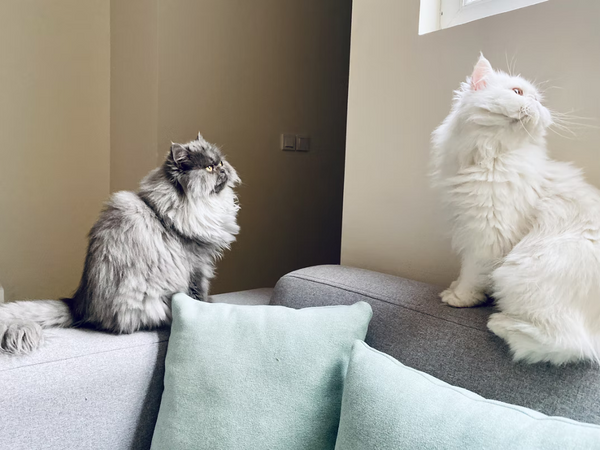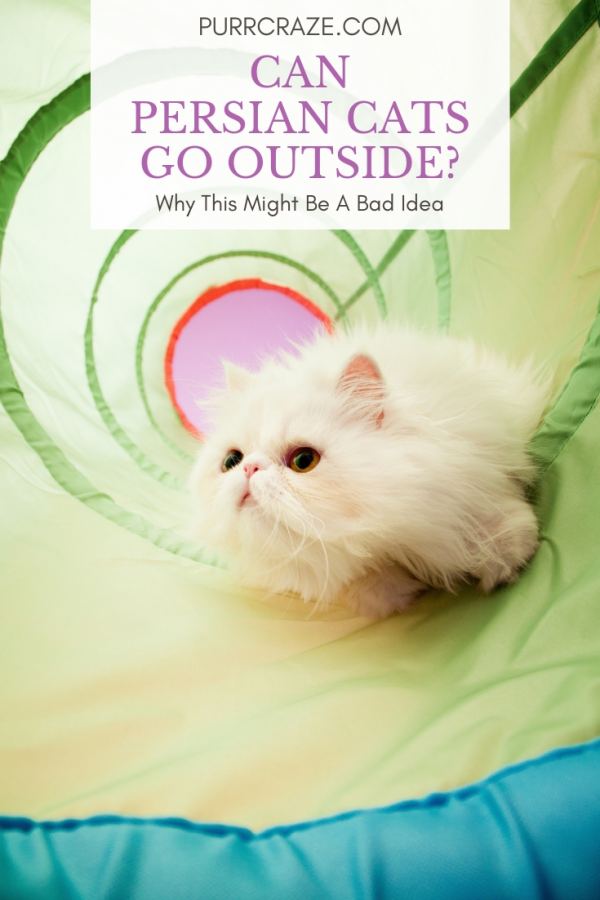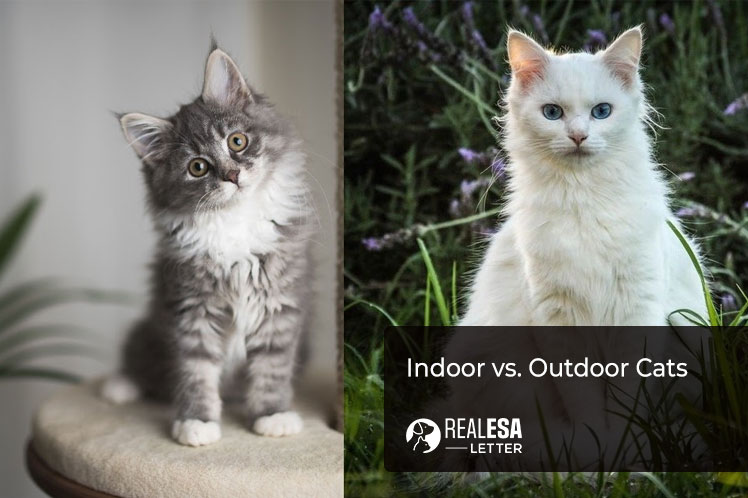Are you a cat person? Have you ever wondered about the different ways Persian cats can live? Well, today we’re going to dive into the topic of Persian cats and whether they are better suited for indoor or outdoor living. This is a topic that many cat owners ponder, as they want to make the best choice for their furry friends.
When it comes to Persian cats, there are a few important factors to consider. These beautiful and majestic creatures have long, luxurious fur that requires regular grooming and maintenance. If they are allowed outdoors, their fur can become easily tangled and dirty, which can lead to health issues. Additionally, Persian cats are known for their gentle and calm personalities, which may make them more susceptible to dangers that exist outside, such as traffic and other animals.
In our upcoming article, we will delve deeper into the pros and cons of both indoor and outdoor living for Persian cats. We will explore how their unique coat and temperament play a role in their living arrangements. So stay tuned to learn more about the best way to provide a safe and comfortable environment for your beloved Persian kitty.
Persian Cats: Indoor vs. Outdoor Living
When it comes to choosing the living arrangement for your Persian cat, there are various factors to consider. Both indoor and outdoor living options have their own advantages and potential risks. As a responsible cat owner, it’s important to weigh these factors and make an informed decision that prioritizes the health, safety, and overall well-being of your furry companion.

Benefits of Indoor Living for Persian Cats
Health and Safety
Indoor living provides a controlled environment that helps to ensure the health and safety of your Persian cat. By keeping them indoors, you reduce the risk of exposure to infectious diseases, parasites, and other potential health hazards that are prevalent in outdoor environments.
Protection from Predators
Persian cats are known for their beautiful long coats, but these coats can make them vulnerable to certain predators. By opting for indoor living, you eliminate the risk of attacks from larger animals or stray dogs that could harm your beloved Persian.
Reduced Risk of Accidents
Indoor living minimizes the chances of accidents such as car accidents or encounters with dangerous objects. This can be especially beneficial if you live in a busy neighborhood or near a busy road.
Controlled Environment
Persian cats are sensitive to extreme weather conditions. By keeping them indoors, you have the ability to regulate the temperature and protect them from extreme heat, cold, or inclement weather.
Prevention of Parasites and Diseases
Outdoor environments can expose your Persian cat to various parasites such as fleas, ticks, and worms. By keeping them indoors, you significantly reduce the risk of parasite infestations and the transmission of diseases that can have a detrimental effect on their health.
Advantages of Outdoor Living for Persian Cats
Natural Stimulation and Enrichment
Outdoor living exposes your Persian cat to a wide range of natural stimuli, including sights, sounds, and smells. This can provide them with mental stimulation, preventing boredom and promoting overall well-being.
Exploration and Freedom
Persian cats are naturally curious creatures, and outdoor living allows them the freedom to explore their surroundings. They can satisfy their instincts by climbing trees, chasing insects, or simply basking in the sun.
Opportunity for Exercise
Outdoor living naturally provides more space and opportunities for physical exercise, allowing Persian cats to run, jump, and play to their heart’s content. This can help them maintain a healthy weight and prevent obesity-related health issues.
Exposure to Fresh Air and Sunlight
Fresh air and sunlight are essential for the overall health of any living creature, and Persian cats are no exception. Outdoor living allows them to benefit from natural vitamin D production and improves their overall respiratory health.
Interaction with Wildlife
For many Persian cats, observing and interacting with wildlife can be an enriching experience. Whether it’s watching birds or stalking insects, outdoor living provides them with the opportunity to engage with the natural world and fulfill their predatory instincts.

Considerations for Indoor Living
Providing Sufficient Play and Exercise
While indoor living may offer a safe and controlled environment, it’s crucial to ensure that your Persian cat receives enough playtime and exercise. Engage them in interactive play sessions and provide them with toys that stimulate their mind and body.
Creating an Enriching Environment
To prevent boredom and behavioral issues, create an enriching indoor environment for your Persian cat. Offer scratching posts, climbing structures, and hiding spots to promote exercise and mental stimulation.
Managing Litter Box and Odor
Proper management of the litter box is important for maintaining a clean and odor-free indoor environment. Ensure that the litter box is cleaned regularly and placed in a quiet and accessible location.
Preventing Boredom and Behavioral Issues
Indoor cats may become prone to boredom, which can lead to destructive behavior or aggression. To prevent this, engage your Persian cat in interactive play and provide them with environmental enrichment, such as puzzle toys or treat-dispensing toys.
Ensuring Social Interaction and Mental Stimulation
Persian cats are social animals and require human interaction for their overall well-being. Spend quality time with your cat, engage in gentle petting, and offer mental stimulation through puzzle toys or clicker training.
Factors to Consider for Outdoor Living
Safety Measures and Enclosures
If you choose outdoor living for your Persian cat, it’s important to ensure their safety. Install a secure enclosure or catio that restricts their access to the outside world while still allowing them to experience the outdoors.
Supervision and Monitoring
When your Persian cat is enjoying outdoor time, keep a close eye on them to ensure their safety. Regularly check for any signs of health issues, injuries, or encounters with potential hazards.
Addressing Weather and Seasonal Changes
Outdoor living exposes your Persian cat to various weather conditions. Provide shelter, shade, and access to fresh water during hot summers, and offer warm, insulated spaces during cold winters.
Dealing with Potential Hazards
Outdoor environments come with potential hazards such as toxic plants, chemicals, and other animals. Familiarize yourself with these hazards and take necessary precautions to keep your Persian cat safe.
Balancing Independence and Safety
Finding the right balance between allowing your Persian cat the freedom to explore and ensuring their safety is crucial. Supervise their outdoor time, consider a microchip for identification, and provide proper training to prevent them from wandering too far.

Determining the Best Living Arrangement
Choosing between indoor and outdoor living depends on several factors unique to each cat and their specific circumstances. Consider the following when making this decision:
Assessing Cat’s Personality and Temperament
Take into account your Persian cat’s personality traits and behaviors. Some cats may be more suited to an indoor lifestyle, while others may thrive in an outdoor environment.
Considering Living Environment and Location
Evaluate your living environment and its suitability for outdoor living. Factors such as traffic, neighborhood safety, and proximity to potential dangers should be considered.
Discussing with Veterinarian
Consulting with your veterinarian can provide valuable insights and guidance. They can help assess your Persian cat’s health needs, behavior, and advise on whether indoor or outdoor living would be more suitable.
Cost and Maintenance Factors
Consider the costs associated with both indoor and outdoor living. Outdoor living may require additional expenses, such as building enclosures or providing necessary vaccinations.
Combining Indoor and Outdoor Living
It’s possible to strike a balance between indoor and outdoor living. Consider creating a safe and enclosed outdoor space while still providing ample opportunities for indoor play and exercise.
Transitioning a Persian Cat Indoors or Outdoors
Transitioning a Persian cat to a new living arrangement requires patience, time, and careful planning. Consider the following methods when making the transition:
Gradual Transition Method
Introduce your Persian cat to the new living arrangement gradually. Start with supervised outdoor time or supervised indoor exploration to help them adjust to the new environment.
Creating a Safe and Enclosed Outdoor Space
If transitioning to outdoor living, create an enclosed and secure outdoor space, such as a catio or backyard enclosure. This allows them to experience the outdoors while ensuring their safety.
Introducing Outdoor Adventures
Gradually expose your Persian cat to the outdoor environment by taking them on supervised adventures. Use a secure leash and harness to control their movements and prevent any potential accidents.
Accustoming to Leashes and Harnesses
Training your Persian cat to walk on a leash and wear a harness can be beneficial if you plan to allow them occasional outdoor access. Start with short sessions indoors and gradually move to outdoor walks.
Monitoring and Adapting
Keep a close eye on your Persian cat during the transition period and assess their comfort level. Make necessary adjustments and provide additional support if needed.

Indoor vs. Outdoor Living: Experts’ Opinions
Perspectives of Veterinarians
Veterinarians generally recommend indoor living for Persian cats due to the various health and safety benefits it offers. However, they acknowledge the importance of environmental enrichment for the overall well-being of cats.
Experiences of Persian Cat Owners
Persian cat owners have diverse opinions based on their own experiences. Some find that indoor living provides a safer and more controlled environment, while others opt for a combination of indoor and outdoor access.
Expert Insights and Recommendations
Experts recommend considering the specific needs and temperament of your Persian cat when making the living arrangement decision. They emphasize the importance of individualized care and attention to ensure the well-being of your cat.
Research Studies and Findings
Research studies have shown that both indoor and outdoor living can have positive impacts on the overall health and well-being of cats. However, each cat’s individual characteristics should be considered when making the decision.
Balancing Different Perspectives
Ultimately, the decision of indoor or outdoor living for your Persian cat is a personal one. Balancing the various perspectives, including veterinary advice, expert recommendations, and your own observations, can help you make an informed choice.
Potential Risks and Challenges of Each Option
Health Risks in Outdoor Living
Outdoor environments can expose Persian cats to various health risks, including infectious diseases, parasites, and injuries from fights or accidents. Regular veterinary check-ups and proper preventive measures can help mitigate these risks.
Indoor Environmental Concerns
Indoor living may present risks such as environmental allergens, indoor pollutants, and lack of natural stimulation. However, with proper environmental enrichment and a clean living space, these risks can be minimized.
Indoor Lifestyle Limitations
Indoor living may pose certain limitations in terms of space and natural stimuli. However, with proper care and providing a stimulating environment, Persian cats can live happy and fulfilling lives indoors.
Outdoor Hazards and Predators
Outdoor living exposes Persian cats to potential hazards such as traffic, toxic plants, and encounters with other animals. Proper supervision, training, and safety measures can help mitigate these risks.
Mitigating Risks and Challenges
Regardless of the chosen living arrangement, it’s crucial to continually evaluate and adapt to the needs of your Persian cat. Regular veterinary care, creating a safe environment, and providing mental and physical stimulation can help address potential risks and challenges.

Training and Enrichment for Persian Cats
Indoor Training and Behavioral Development
Indoor living provides ample opportunities for training and behavioral development. Utilize positive reinforcement techniques to teach your Persian cat commands, tricks, and appropriate behaviors.
Outdoor Training and Socialization
If opting for outdoor living, socialization and training remain important. Teach your Persian cat to walk on a leash and harness, and ensure they are comfortable with interactions with other people and animals.
Novelty and Puzzle Toys for Stimulation
Both indoor and outdoor living can benefit from the use of novelty and puzzle toys. These toys engage your Persian cat’s natural hunting instincts and provide mental stimulation.
Mental Exercise and Engagement
Persian cats are intelligent and require mental exercise to prevent boredom and behavioral issues. Use interactive toys, puzzle feeders, and training sessions to keep their minds engaged.
Keeping Cats Entertained
Enrich your Persian cat’s indoor living environment with scratching posts, interactive toys, and rotating their toys regularly. This helps prevent boredom and provides mental and physical stimulation.
The Role of the Owner in Cat’s Living Arrangement
Understanding Personal Preferences
As a Persian cat owner, it’s important to understand your own preferences and lifestyle when considering their living arrangement. Consider your time availability and ability to provide proper care.
Providing Basic Needs and Care
Regardless of the chosen living arrangement, fulfilling your Persian cat’s basic needs is crucial. Provide them with a balanced diet, fresh water, regular veterinary check-ups, and a clean living environment.
Building Trust and Bond
Persian cats thrive on love and attention. Spend quality time with them, provide affection, and engage in gentle play to build a strong bond of trust.
Supporting Health and Well-being
Support your Persian cat’s overall health and well-being by providing them with regular exercise, mental stimulation, and a healthy diet. Visit your veterinarian for routine check-ups and vaccinations.
Respecting the Cat’s Nature
Persian cats have certain inherent needs and behaviors. Respect their individuality and provide an environment that accommodates their natural instincts and preferences.
Frequently Asked Questions about Persian Cats’ Living Arrangement
Can Persian cats be kept outdoors?
Persian cats are typically not suited for outdoor living due to their long coats and sensitive nature. They are better suited to an indoor lifestyle where their health and safety can be better maintained.
Is it safe to let a Persian cat roam freely outside?
Allowing a Persian cat to roam freely outside poses several risks, including encounters with predators, exposure to infectious diseases, and potential accidents. It is generally recommended to provide supervised outdoor time within a secure enclosure.
How can I ensure my indoor Persian cat gets enough exercise?
Provide regular interactive playtime sessions, offer toys that encourage physical activity, and create a stimulating environment with climbing structures and scratching posts. Consider using puzzle toys or treat-dispensing toys to engage your Persian cat mentally and physically.
What are some indicators that my Persian cat is not happy with its living arrangement?
Signs of unhappiness in Persian cats can include increased aggression, excessive scratching or chewing, urinating or defecating outside the litter box, excessive grooming, loss of appetite, and lethargy. Consult with your veterinarian to address any concerns you may have.
Can I transition my adult Persian cat from outdoor to indoor living?
Transitioning an adult Persian cat from outdoor to indoor living is possible but requires patience, training, and environmental enrichment. Gradual transitions, providing mental and physical stimulation, and creating a safe and stimulating indoor environment can help ease the transition.
Do Persian cats need outdoor stimulation to stay healthy?
Persian cats can have happy and healthy lives indoors with the proper care, environmental enrichment, and regular mental and physical exercise. Outdoor stimulation can be provided through supervised outdoor time or by creating an enclosed outdoor space.
What precautions should I take if I choose to let my Persian cat outdoors?
If you choose to provide outdoor access, ensure that your Persian cat is supervised and within a secure enclosure. Regularly check the enclosure for potential hazards, provide shade and fresh water, and protect them from extreme weather conditions.
Are there any specific dangers or risks associated with keeping Persian cats indoors?
Keeping Persian cats indoors can present risks such as obesity, lack of mental stimulation, and potential behavioral issues. However, these risks can be mitigated through regular exercise, environmental enrichment, and providing proper mental and physical stimulation.
Can I train my Persian cat to walk on a leash?
Yes, Persian cats can be trained to walk on a leash and harness. Start with short training sessions indoors, gradually transitioning to outdoor walks. Use positive reinforcement techniques and patience to make the training process a positive and enjoyable experience.
What factors should I consider before deciding whether to keep my Persian cat indoors or outdoors?
Factors to consider when deciding on your Persian cat’s living arrangement include their health, temperament, behavior, environmental safety, and your ability to provide proper care, exercise, and mental stimulation. Consult with your veterinarian and consider the specific needs and characteristics of your Persian cat before making a decision.
Conclusion
The decision between keeping your Persian cat indoors or allowing them outdoor access is a personal one that depends on various factors. Balancing the health, safety, and overall well-being of your cat is crucial in choosing the most suitable living arrangement. Assess your Persian cat’s individual needs, consult with experts, and consider their personality and environment to create a happy and fulfilling life for your beloved companion. Remember to provide proper care, mental and physical stimulation, and always prioritize their well-being.